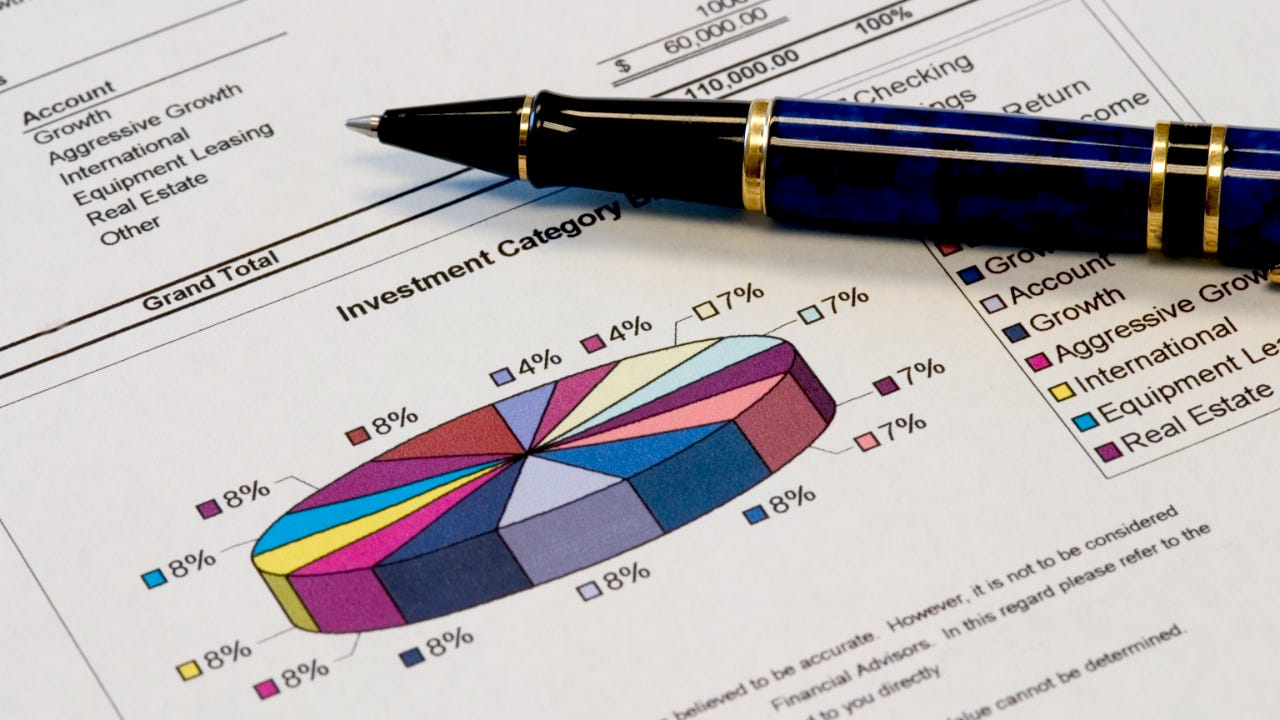Why is portfolio diversification important for investors?

The Bankrate promise
At Bankrate we strive to help you make smarter financial decisions. While we adhere to strict , this post may contain references to products from our partners. Here's an explanation for .
Portfolio diversification involves investing in many different securities and types of assets so that your overall return doesn’t depend too much on any single investment. Financial experts often recommend a diversified portfolio because it reduces risk without sacrificing much in the way of returns. In fact, you may ultimately earn a higher long-term investment return by holding a diversified portfolio.
Here’s how diversification works, why it’s so important and how to diversify your portfolio.
Key takeaways
- Diversification involves spreading your money across a variety of investments and asset classes.
- A diversified portfolio helps to reduce risk and may lead to a higher return.
- Investments that move in opposite directions from one another will add the greatest diversification benefits to your portfolio.
What is diversification?
Diversification means owning a variety of assets that perform differently over time, but not too much of any one investment or type. In terms of stock investing, a diversified portfolio would contain 20-30 (or more) different stocks across many industries. But a diversified portfolio could also contain other assets – bonds, funds, real estate, CDs and even savings accounts.
Each type of asset performs differently as an economy grows and shrinks, and each offers varying potential for gain and loss:
- Stocks offer the potential for the highest return over time, but can fluctuate wildly over shorter periods.
- Bonds can offer steadier returns with a fixed payout, but can vary as interest rates rise and fall.
- Funds tend to be diversified because they usually hold many investments, but a specific fund may hold only one kind, for example, consumer goods companies. So, a fund could be broadly diversified or narrowly, depending on how it’s managed.
- Real estate can appreciate slowly over time and offer the potential for income, too. But physical real estate can be expensive to maintain, and commissions are high.
- CDs and savings accounts will not fluctuate in value but will grow steadily based on the interest rate or other contractual terms.
As some assets appreciate in value, others will remain steady or fall. Over time, the frontrunners may turn into laggards, or vice versa. In other words, these assets are not highly correlated with one another, and that’s key to the appeal of diversification.
And it’s easier and cheaper than ever to ensure that your portfolio has a broad array of investments, with zero commissions at major online brokerages.
Money tip: Interest rates have risen significantly since early 2022, which impacts the value of virtually every financial asset. All else being equal, lower interest rates mean higher asset values and higher interest rates mean lower asset values.
How diversification benefits you
Diversification has several benefits for you as an investor, but one of the largest is that it can actually improve your potential returns and stabilize your results. By owning multiple assets that perform differently, you reduce the overall risk of your portfolio, so that no single investment can hurt you too much.
Because assets perform differently in different economic times, diversification smoothens your returns. While stocks are falling, bonds may be rising, and CDs remain stable.
In effect, by owning various amounts of each asset, you end up with a weighted average of the returns of those assets. Although you won’t achieve the startlingly high returns from owning just one rocket-ship stock, you won’t suffer its ups-and-downs either.
While diversification can reduce risk, it can’t eliminate all risk. Diversification reduces asset-specific risk – that is, the risk of owning too much of one stock (such as Amazon) or stocks in general, relative to other investments. However, it doesn’t eliminate market risk, which is the risk of owning that type of asset at all.
For example, diversification can limit how much your portfolio falls if some stocks decline, but it can’t protect you if investors decide they don’t like stocks and punish the whole asset class.
For assets sensitive to interest rates, such as bonds, diversification helps protect you from a problem at a specific company, but it won’t protect you from the threat of rising rates generally.
Even cash, or investments such as CDs or a high-yield savings account, are threatened by inflation, although deposits are typically guaranteed from principal loss up to $250,000 per account type per bank.
So diversification works well for asset-specific risk, but is powerless against market-specific risk.
How to develop a diversification strategy
With the advent of low-cost mutual funds and ETFs, it’s actually simple to create a portfolio that’s well-diversified. Not only are these funds cheap, but major brokerages now allow you to trade many of them at no cost, too, so it’s tremendously easy to get in the game.
Building a simple diversified portfolio
A basic diversified portfolio could be as simple as holding a broadly diversified index fund such as one based on the Standard & Poor’s 500 index, which owns stakes in hundreds of companies. But you’ll probably want some exposure to bonds as well to help stabilize the portfolio, and guaranteed returns in the form of CDs help, too. Finally, cash in a savings account can also give you stability as well as a source of emergency funds if you need it.
Stock diversification
If you want to expand beyond this basic approach, you can diversify your stock and bond holdings. For example, you might add a fund that owns companies in emerging markets or international companies more generally, because an S&P 500 fund doesn’t own those. Or you may opt for a fund comprised of small public companies, since that too is outside the S&P 500.
Fixed income diversification
For bonds, you might choose funds that have short-term bonds and medium-term bonds, to give you exposure to both and give you a higher return in the longer-dated bonds. For CDs, you can create a CD ladder that gives you exposure to interest rates across a period of time.
Some financial advisors even suggest that clients consider adding commodities such as gold or silver to their portfolios to further diversify beyond traditional assets such as stocks and bonds.
Finally, however you construct your portfolio, you’re looking for assets that respond differently in different economic climates. It doesn’t create diversification if you have different funds that own all the same large stocks, because they’ll perform mostly the same over time.
And if all this sounds like too much work, a fund or even a robo-advisor can do it for you. A target-date fund will move your assets from higher-return assets (stocks) to lower-risk (bonds) over time, as you approach some target year in the future, typically your retirement date.
Similarly, a robo-advisor can structure a diversified portfolio to meet a specific goal or target date. In either case, you’re likely to pay more than if you did it yourself, however.
Bottom line
Diversification offers an easy way to smoothen your returns while potentially increasing them as well. And you can have a variety of models for how diversified you want your portfolio to be, from a basic all-stock portfolio to one that holds assets across the spectrum of risk and reward.
If you’re just starting out with investing, check out some of the best investments for beginners and key financial ratios investors should know.
